Old Galway
UNDER 16 BISH HURLERS
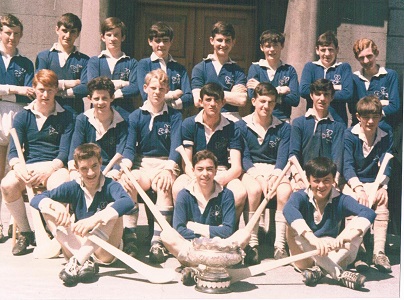
by Tom Kenny
This was the team representing St. Joseph’s College which won the Rosebowl Cup in 1968.
They are, back row, left to right; Christy Howley, Hugh Ryan, Tony Dilleen, Jimmy Small, Tom Murphy, Tom Naughton, Jimmy Cunningham, Joe McMahon.
Centre row; Jim Noone, Tom Connolly, Vincent O’Malley, Gerry Glynn, Joe Corcoran, Michael Beatty, Kevin Browne.
In front are Gerry Gilmore, Michael Thornton and John Crowe.
The Crane at Woodquay
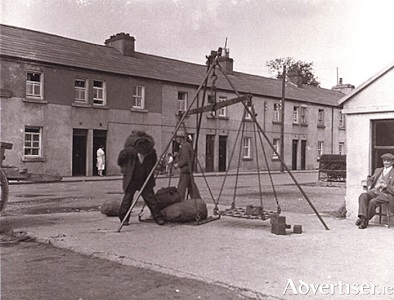
by Tom Kenny
In the early 19th century, most of the area we see in our photograph would have been under water. Woodquay was so called because of the 150 feet wooden quay that ran the length of it. It was a kind of second docks for the city, attracting a lot of commercial traffic down the river. The Corrib Drainage Scheme in 1852 began to change the face of the space we are looking at, and later, when Steamer’s Quay was built, the area was gradually filled in and reclaimed.
GALWAY GRAMMAR SCHOOL, 1903
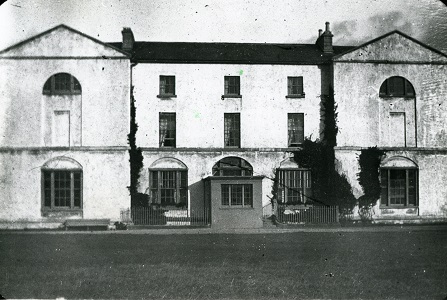
by Tom Kenny
Galway Grammar School was a Protestant institution established under the Erasmus Smith Trust in 1669. It opened around 1675 and has been located at College Road since 1815. The 1950/51 school year was an eventful one when, in November of that year, a wing of the school was gutted by fire, and happily, there was no danger of loss of life. Four months later a dormitory ceiling collapsed. The Headmaster, George Coughlan, said that the collapse was caused by a 24 foot beam being charred through by a chimney fire. The beam brought down two other beams and half the ceiling. In many old buildings, beams went into chimney flues and successive chimney fires charred them until they came down. Neither incident occasioned an interruption in the school routine.
LOOKING WEST ON SHOP STREET, c.120 YEARS AGO
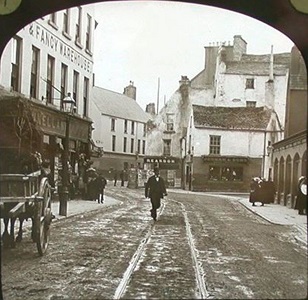
by Tom Kenny
The first thing you notice about this image is the state of the street surface with its animal droppings and puddles. You had to be careful crossing the street, which is why they laid down cobbles between foot paths, you can see them at the entrance to Church Lane and Church Street.
GALWAY FOLKLORE
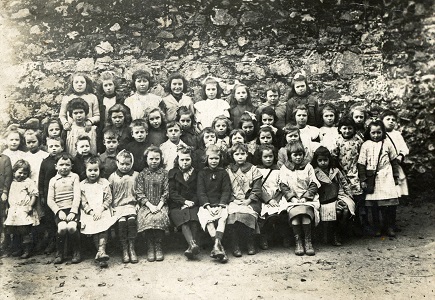
by Tom Kenny
Over 300 primary school teachers attended a conference in Tuam in 1937, 80 years ago tomorrow, to launch the School’s Folklore Collection in Galway County. This was a scheme which invited senior primary pupils, under direction, to go to the oldest person in their community or their grandparents to collect folklore and folk life traditions relating to their own area. Caitríona Hastings has just published a book in which she has selected material from this project which was gathered by pupils of 14 schools in Galway and environs. They are Menlo NS, Castlegar NS, Carrowbrowne NS, Barna, Bushypark, Presentation Convent, Convent of Mercy NS, Claddagh NS (boys), Claddagh (girls), St. Brendan’s NS, Claregalway (boys) & Claregalway (girls),Oranmore (boys) and Oranmore Convent.
GALWAY CITY CHALLENGE HURLING CUP
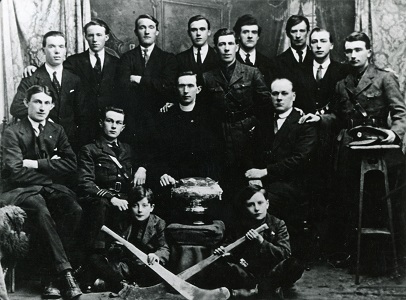
by Tom Kenny
As nationalist sentiment was rising in the early years of the last century, a new generation of GAA officials emerged who were zealous in their belief in the transformative power of the GAA and they saw themselves as engaged in a project of national liberation. Some GAA tournaments were staged as part of a pro-Boer campaign. Police reports noted, “The ambition it seems to get hold of the youth of the country and educate them in rebellious and seditious ideas”, a somewhat hysterical interpretation of the GAA ban on foreign games.
MINUTES OF AN HISTORIC MEETING
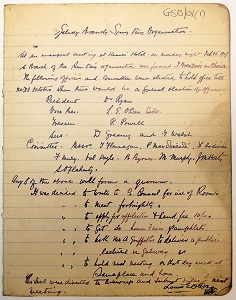
by Tom Kenny
Our illustration today is of the minutes of the inaugural meeting of the Galway City Branch of Sinn Féin which was held in Keane’s Hotel, Eyre Square on February 15th, 1907. T Breathnach was in the chair.
THE LION’S TOWER

by Tom Kenny
The Lion’s Tower was part of the old city wall. In the last century, it was situated on Eglinton Street between the Garda Barracks and the Savoy Cinema. Our photograph today, which we show you courtesy of the Board of Works, dates from about 1950 and shows the tower as seen from the yard beside the barracks.
